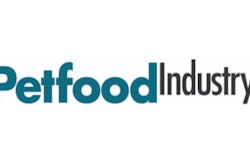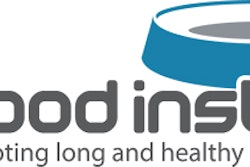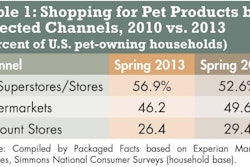The latest proposed rule of the Food Safety Modernization Act (FSMA) has the petfood industry's full attention, bringing concerns and critiques from all corners. The rule, "Current Good Manufacturing Practice and Hazard Analysis and Risk-Based Preventative Controls for Food for Animals," is meant to focus on preventing problems in order to improve the safety of food for animals, according to the U.S. Food and Drug Administration (FDA). But the potential for new, possibly complex procedures to accomplish this goal, as well as a short review and comment period (as of this writing, comments are due on February 26, 2014, though several groups have filed requests for an extension), have industry leaders working overtime to protect petfood interests.
The Pet Food Institute, for example, has teams of industry experts reviewing the rule and providing detailed feedback for comments. It is working with the American Feed Industry Association (AFIA), National Grain and Feed Association (NGFA) and other members of the animal feed industry to find areas of commonality in order to reinforce each other's arguments. PFI is also in contact with the Pet Food Association of Canada so the other country can comment on the rule from their perspective.
"The number one thing that we're emphasizing in our approach to FDA is that [the final rule] not be prescriptive," said Duane Ekedahl, PFI president, "and that the rule will allow flexibility and discretion by the manufacturer, considering the fact that no two manufacturing plants are alike, and each of them produces a product that currently meets the regulations. The safety record of petfood is high; it's a very, very good record already. And it's in that context that we'll be stressing with FDA the need for them-as they said they're going to do-to tell us what they need but not how to do it."
Going through the proposed rule to provide comprehensive comments to that effect is a significant task. "This is really the first major overhaul of the animal food regulations," said Leah Wilkinson, AFIA director of ingredients, petfood and state affairs. "It's really the first overhaul that's been there in decades. So it's a monumental task to try to get through all of the different regulations that are proposed, especially because this is the first time that current Good Manufacturing Practices (GMPs) are going to be established for non-medicated feed. Currently only medicated feed has GMPs. That's the first major portion of the proposed rule, is to establish those GMPs."
The focus is also on hazard analysis and the preventive controls. "Those two items were required by the FSMA, [but] the current GMPs were not part of the law that was passed," said Wilkinson. "So that was something the FDA added in as they were going through writing the proposed regulations; they decided the industry needed to have GMPs as well as doing the hazard identification and preventive controls."
The comment period  provided by FDA-roughly four months from the proposed rule's publish date of October 29, 2013-is far shorter than ideal, according to the industry. "The problem that we have is with the lawsuit that was filed (in August 2013 a judge in the US District Court of Northern California ruled that FDA can no longer extend deadlines on releasing policies mandated by the FSMA), the latest that we can get comment deadline to is likely March 31, 2014," said Wilkinson. "FDA has said they will consider our request; we're not sure if we're going to get it. We know that they're appealing that court order timeframe. We hope they win on appeal and that we can get some more time so that we can have adequate time to review and make sure that we've captured everything across the entire feed and petfood industries."
The challenge with a short comment period is largely just getting through the material itself-the main body of work, plus items like references and economic impact statements. Both Wilkinson and Ekedahl said they're hoping for the best when it comes to getting an extension, but are preparing to submit comments by the original deadline, just in case.
There is no shortage  of items to comment on-things like the potential economic impact and new record-keeping requirements have the industry concerned. "FDA assessment suggests that the cost per facility to comply would be $10,000," said Ekedahl. "What we're hearing from our members is that the cost per facility for companies to comply is a huge multiple of that. This is a serious concern, that across the broad spectrum of the industry on an already safe product we may have to incur those kinds of costs. This has an impact on the industry."
According to the latest American Customer Satisfaction Index, petfood has the third-highest score of all industries measured, at 83. "The safety record of petfood is extraordinary," said Ekedahl. "And the consumer sees petfood as something that they have a high level of confidence in. There's no real food product ranked above petfood in the American Customer Satisfaction Index. We're hopeful that the final rule will recognize that the public health risk of petfood is very, very low, and that [FDA's] move will reflect that."
Any expanded record-keeping process will need close looking at, as well. "How [will records be] transmitted?" said Ekedahl. "Will they be taken outside of the context of each individual manufacturing plant? And control of those records, and how will they be updated? You can have a safety plan, but unless you put it in the context of a given facility, the likelihood of problems occurring is pretty high."
The major "pro" of the proposed rule isn't so much in the wording as in the petfood industry's ability to take it on. "The concepts of what's in the rule are not going to be too new for most of the petfood industry," said Wilkinson. "A lot of what's there is already industry best practice, whether it be the good manufacturing practices that they've outlined, or identifying the hazards and putting in measures to prevent them or mitigate them, and making sure that those measures work. The devil's going to be in the details of what they have in there and what they eventually put in a final rule."
That preparation is  going to be essential, given the possible timeline for implementation. "What we've told our members is, don't wait," said Wilkinson. "Start looking at your facilities now, start looking at the procedures you have in place. We know that FDA is going to be requiring a lot of documentation. Make sure that you have that documentation in place; start putting procedures in place to have it and make sure it's the proper documentation.
"Look at your facilities; make sure you can meet those GMPs. Even though they might have a year or two years or three years post-publication to come into compliance, we're just encouraging people to do as much and think about it as much as they read through the proposed rule as they can."
The bones of the  proposed rule have promise, but there's a lot of work to be done, according to the industry. "I'm not sure there's an ideal in a massive regulation like this," said Ekedahl. "We hope FDA will take our comments under serious consideration. We hope that the end product will be something that is flexible and allows companies the time they need to implement the new requirements."
Refinement will be key before all is said and done. "We think what they've got as a start can be a pretty good basis for the industry to have as a guidepost for compliance," said Wilkinson. "Now it's just getting it to be refined and into something that's doable for the industry, as well as protecting the consumers and the animals that consume the product. It's there, we just have to refine it and make it better."















